California Condor Facts
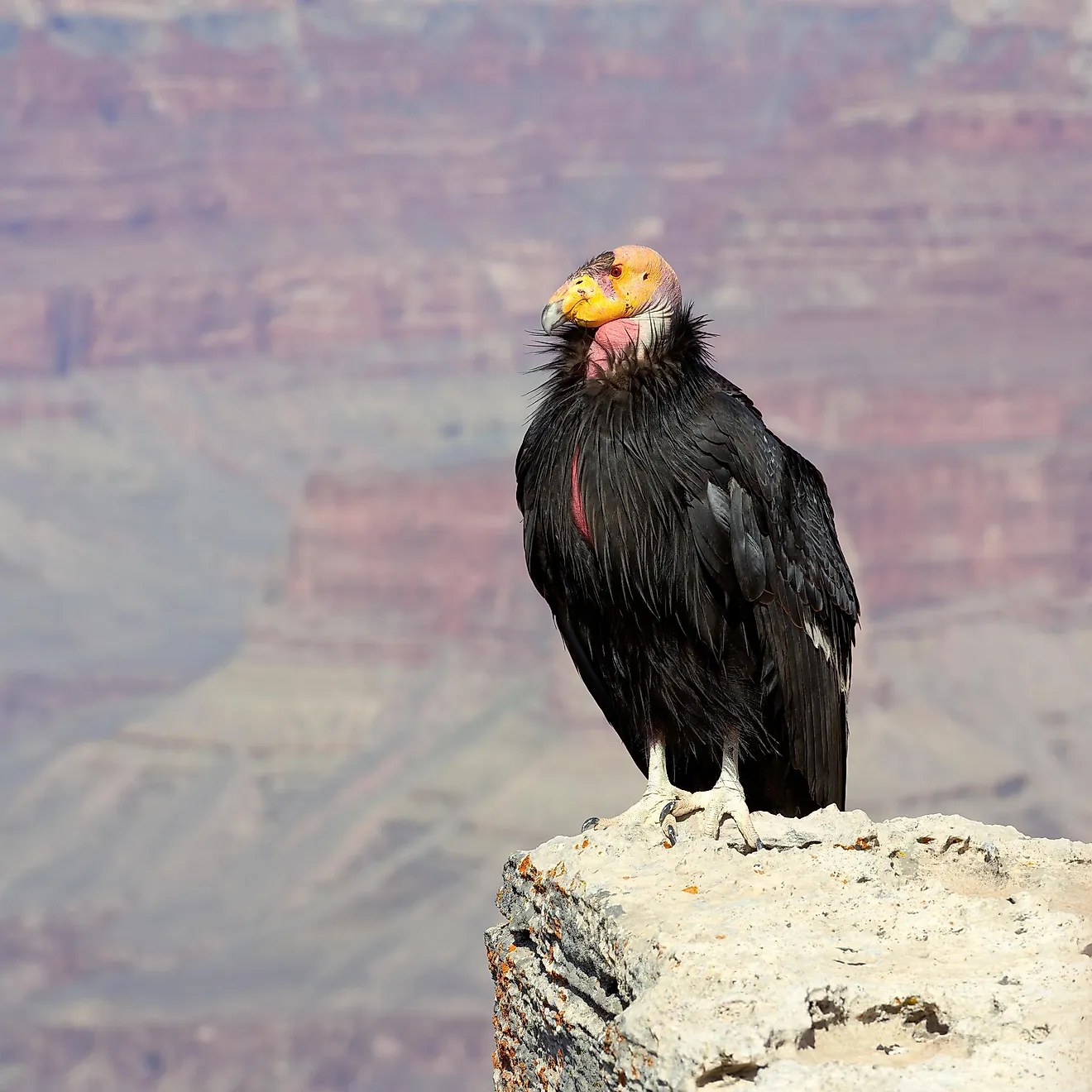
- The California condor is a member of the New World vultures and are considered to be the largest land birds in North America.
- Being scavengers, Californian Condors are carrion eaters so they feed on dead and decaying animals.
- They are considered to be Critically Endangered and are currently facing severe threats due to lead poisoning and the use of chemicals like DDT.
The California condor (Gymnogyps californianus) is a member of the family of New World vultures and is considered to be the largest land bird in North America. Commonly referred to as "thunderbirds," California condors serve as ecosystem scavengers, helping to recycle nutrients and clearing away dead and decaying animals by consuming them. They are revered as a sacred bird by many Indigenous peoples and therefore often play a prominent role in their folklores and belief systems.
Taxonomic Position
- Phylum: Chordata
- Class: Aves
- Order: Cathartiformes
- Family: Cathartidae
- Genus: Gymnogyps
- Species: californianus
- Binomial Name: Gymnogyps californianus (Shaw, 1797)
The genus name has been derived from the Greek word Gymnast, meaning "to exercise naked" or, more fitting here, just "naked," and Gyps which refers to a genus of vultures. The genus name thus refers to the featherless heads of the condors. The specific epithet is in reference to the distribution range of the condor species.
Physical Description
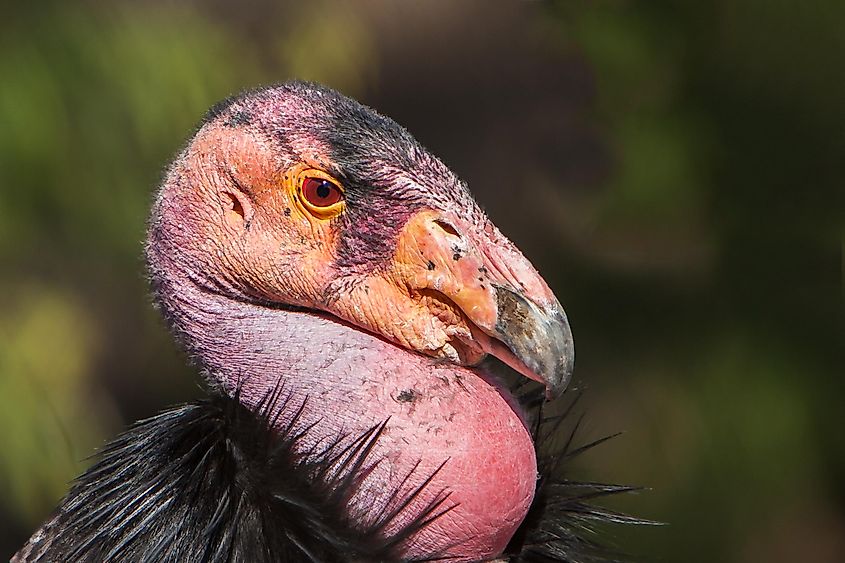
Identifying the California condor is quite easy due to its massive size (much larger when compared to other vultures and raptors sharing its habitat) Adult condors possess a black plumage with large white stripes located on the underwing. The orange/pink-colored head of the bird is without any feathers and features a hooked beak and reddish-brown eyes. The bird’s wingtips are splayed into conspicuous fingertips. Young condors have a dull appearance, with a black head and a much paler mottled gray stripe on the underwing. The feet of the condor are greyish in color and have relatively blunt talons.
Size And Wingspan
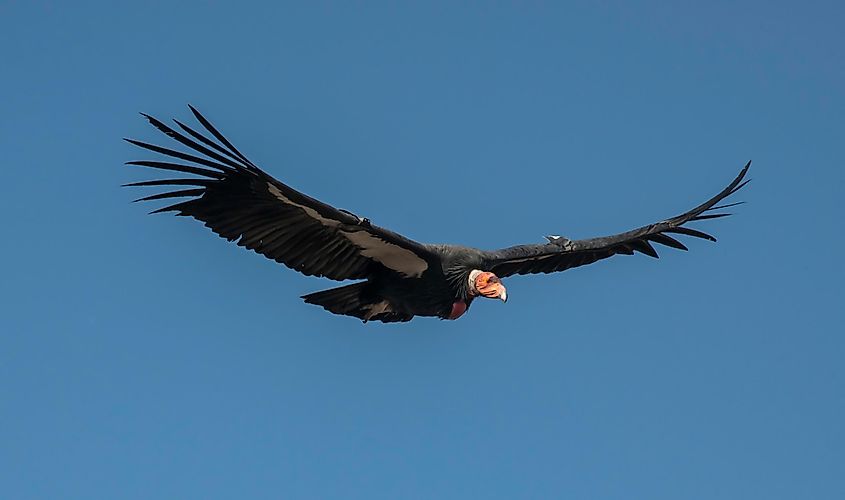
Male condors are much larger in size in comparison to females. The birds weigh over 20 pounds and have a wingspan of more than 9.5 feet. Among all the birds of North America, California condors have the largest wingspan. These birds can soar up to 15,000 feet in the air and glide for several hours without even beating their wings.
Distribution And Habitat
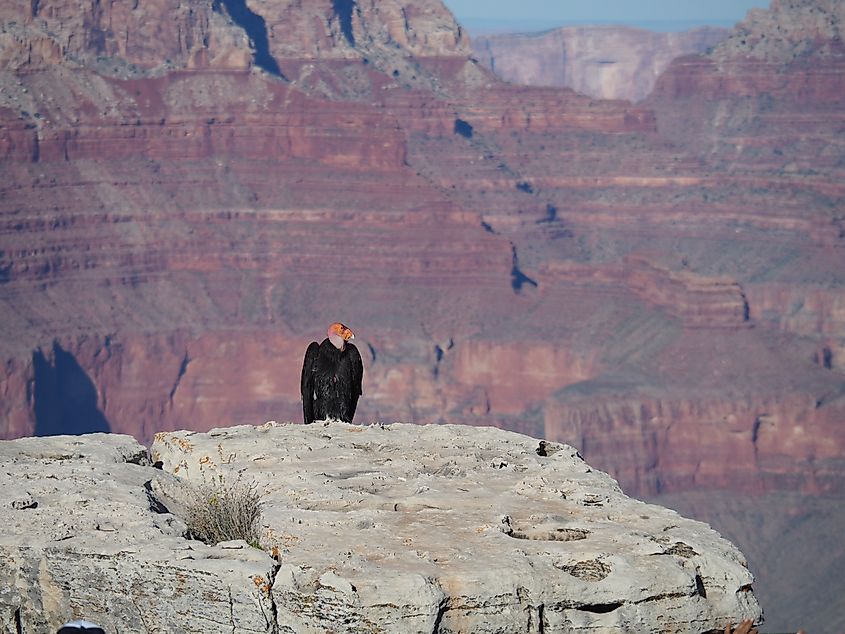
In the past, California condors lived in several regions of North America, ranging mainly from British Columbia in Canada to Baja California in Mexico, and the US states of Florida, Texas and New York. Currently, they are found in very small populations in the coastal hills and mountains of California, Arizona, Utah including the Grand Canyon region.
Condors prefer having their nest sites in the cliff caves of high mountains or atop tall redwood trees. They are mainly found residing in rocky shrublands and coniferous forests. Presently, two sanctuaries have been dedicated to the recovery of this bird species. They are The Sisquoc Condor Sanctuary in San Rafael Wilderness and the Sespe Condor Sanctuary in the Los Padres National Forest in California.
Diet
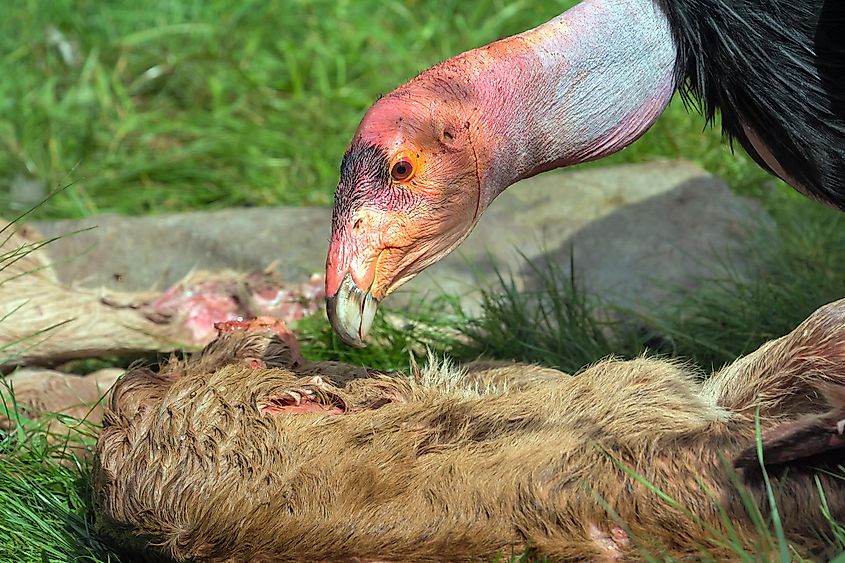
As scavengers, California condors are carrion eaters and feed on dead and decaying animals. They play a vital role in ridding their habitat of bacteria found in decaying flesh that could harm other animals, since the bird's stomach is resistant to those organisms.
Condors prefer feeding on the carcasses of large terrestrial mammals like cattle, goats, pigs, horses, bears and cougars. Sometimes they also feed on the carcasses of smaller terrestrial and aquatic mammals. Since condors do not have a sense of smell, they locate their food by looking up to the sky for other scavengers like eagles and other smaller vulture species hovering over carrion.
Reproduction
California condors can survive up to 60 years in the wild. They do not sexually mature until they are 6 or 7 years of age. The females lay only a single bluish-white egg per year, which will successfully hatch only after 60 days of incubation by both the male and female birds. This slow reproduction and maturation are one of the factors responsible for speeding the decline of the bird’s population in the presence of other environmental stressors.
Current Population
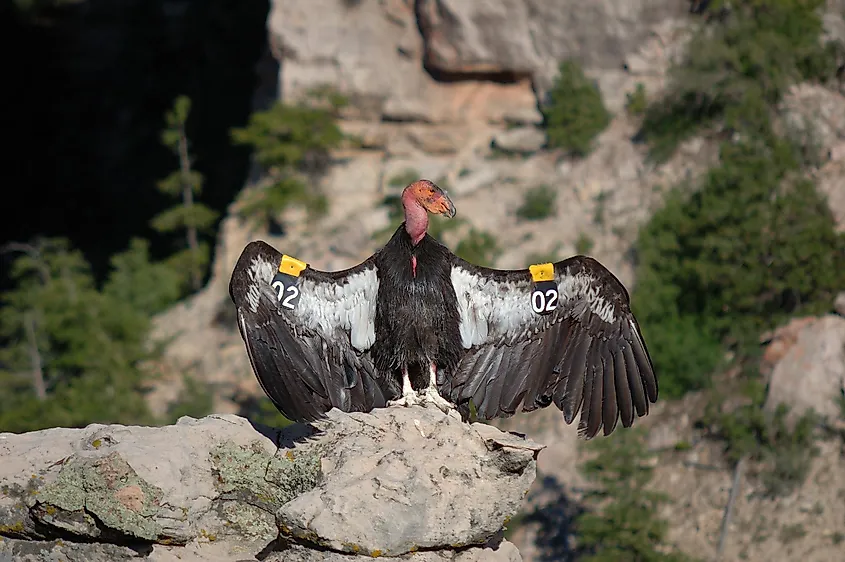
By 1987, only 27 California condors remained in the wild. A massive captive breeding program was undertaken to revive this species from the verge of extinction. Currently, there are about 500 adult Californian condors in the wild or in captivity. This bird species has recently started to breed successfully in the wild again. However, the wild populations still require extreme monitoring, care and management for their survival.
Threats
The main threats to California condors are lead poisoning and the use of agricultural chemical pesticides like DDT. Lead poisoning is mainly due to the ingestion of lead ammunition (lead shots, intact bullets and bullet fragments) in the animal carcasses that the condors feed on. The ingestion of environmental toxins like lead, micro trash, TCPM [tris (4-chlorophenyl) methanol] and DDT is a major cause of the thinning of the bird's egg-shells, and also of their lower reproductive success leading to the subsequent loss of genetic diversity. Some other threats to the condors include the destruction of their habitat, poaching, and collision with power lines.
Conservation Status
As per IUCN Red List, California condors are considered to be Critically Endangered (CE). The species has also been provided with the highest protection under Appendix I of the Convention on International Trade in Endangered Species of Wild Fauna and Flora (CITES).
In 1967, the condors were first nationally protected by the US Endangered Species Preservation Act and were formally listed as an Endangered and Protected species under the US Endangered Species Act, 1972. The first Recovery Plan for this endangered species was launched in 1975.
Due to large scale efforts, their populations are, fortunately, increasing.
California Condor Facts
| Feature | Fact |
|---|---|
| Scientific Name | Gymnogyps californianus |
| Classification | Bird |
| Weight | 20 lbs |
| Body Length | 43-55 in |
| Wingspan | 9.5 ft |
| Speed | 55 miles/hour |
| Diet | Carnivore/scavenger: carrion |
| Lifespan | 60 yrs |
| Egg Incubation | 57 days |
| Nature | Social |
| Conservation Status | Critically Endangered |











